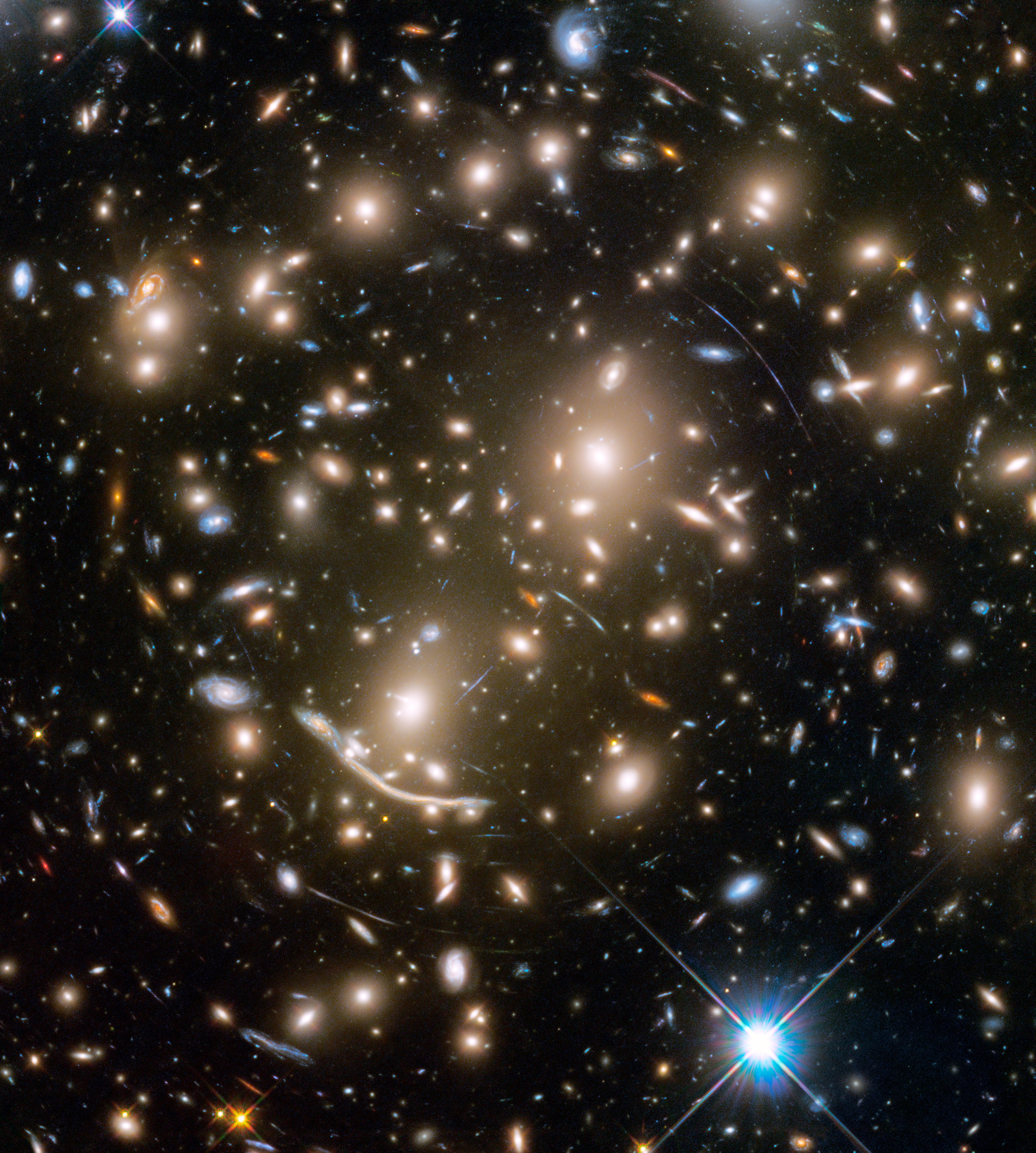
Hubble’s Abell 370 (Frontier Fields)
NASA's Hubble Space Telescope captured this image of the galaxy cluster Abell 370 in visible and near-infrared light. Abell 370 contains several hundred galaxies tied together by the mutual pull of gravity. It was one of the first clusters in which astronomers observed the phenomenon called gravitational lensing. Entangled among the galaxies are arcs of blue light. These are actually distorted images of remote galaxies behind the cluster. These far-flung galaxies are too faint for Hubble to see directly. Instead, the gravity of the cluster acts as a huge lens in space, magnifying and stretching images of background galaxies like a funhouse mirror. Abell 370 was the last of six galaxy clusters imaged by the Frontier Fields project, which used the combined power of natural gravitational lenses caused by massive galaxy clusters and Hubble's ability to create long-exposure deep field images to see galaxies that would normally be far beyond the reach of telescopes. One of the most distinctive galaxies magnified by the cluster is nicknamed "The Dragon." It is an extended feature that probably consists of several duplicated images of a single background spiral galaxy stretched along an arc. Nearly a hundred distant galaxies behind this cluster have multiple images caused by the lensing effect. Abell 370 is located approximately 4 billion light-years away in the constellation Cetus, the Sea Monster.
